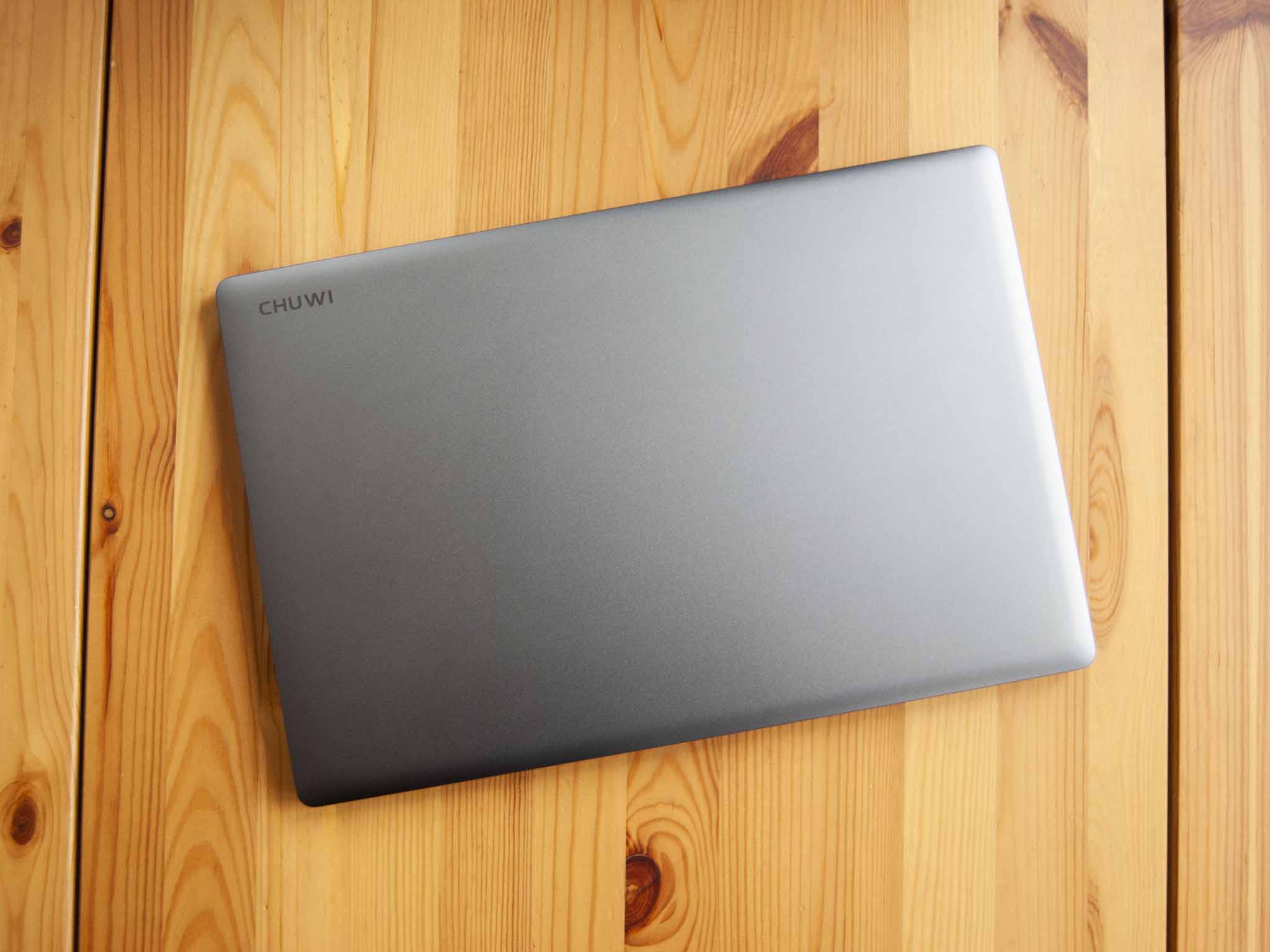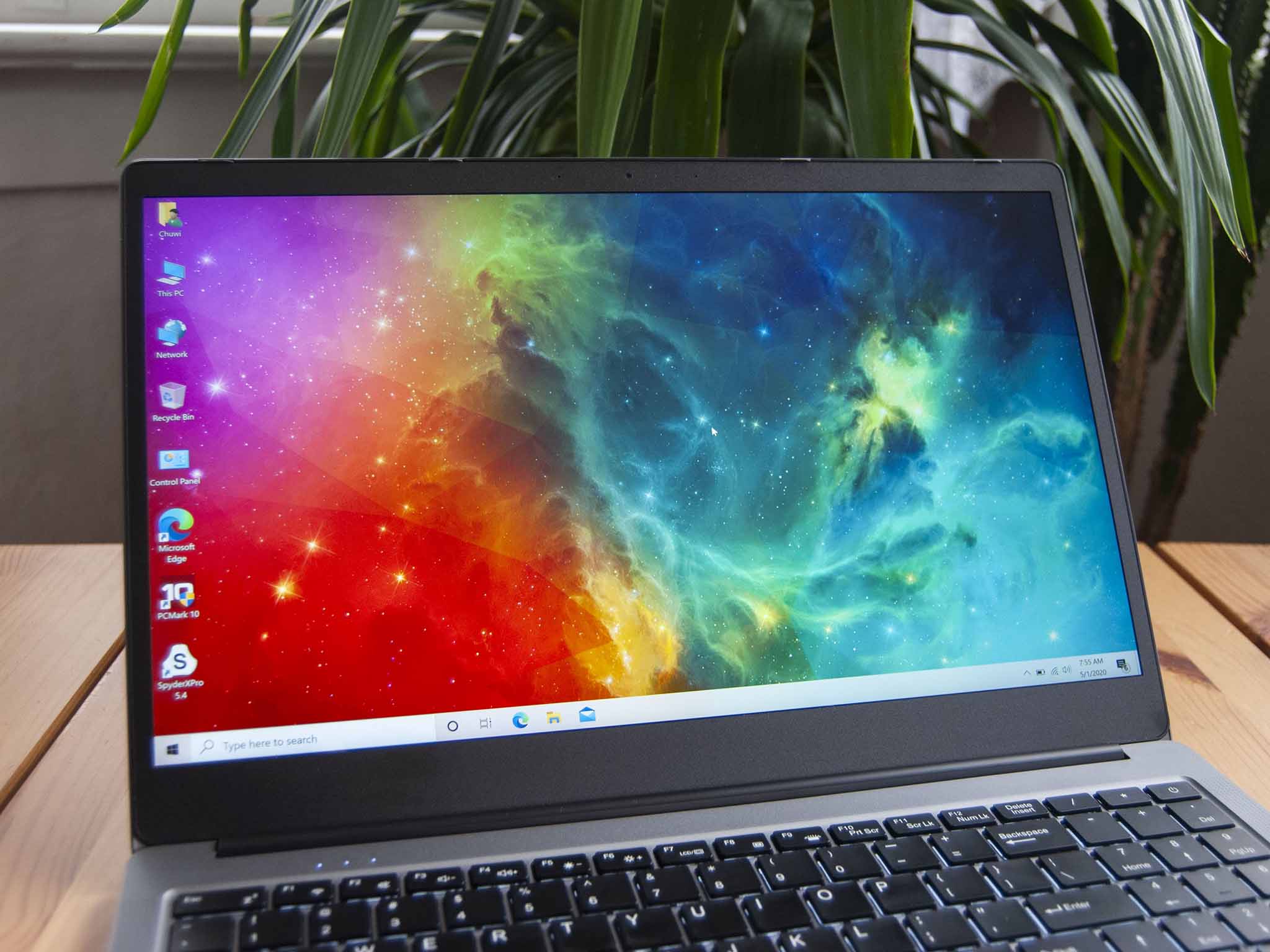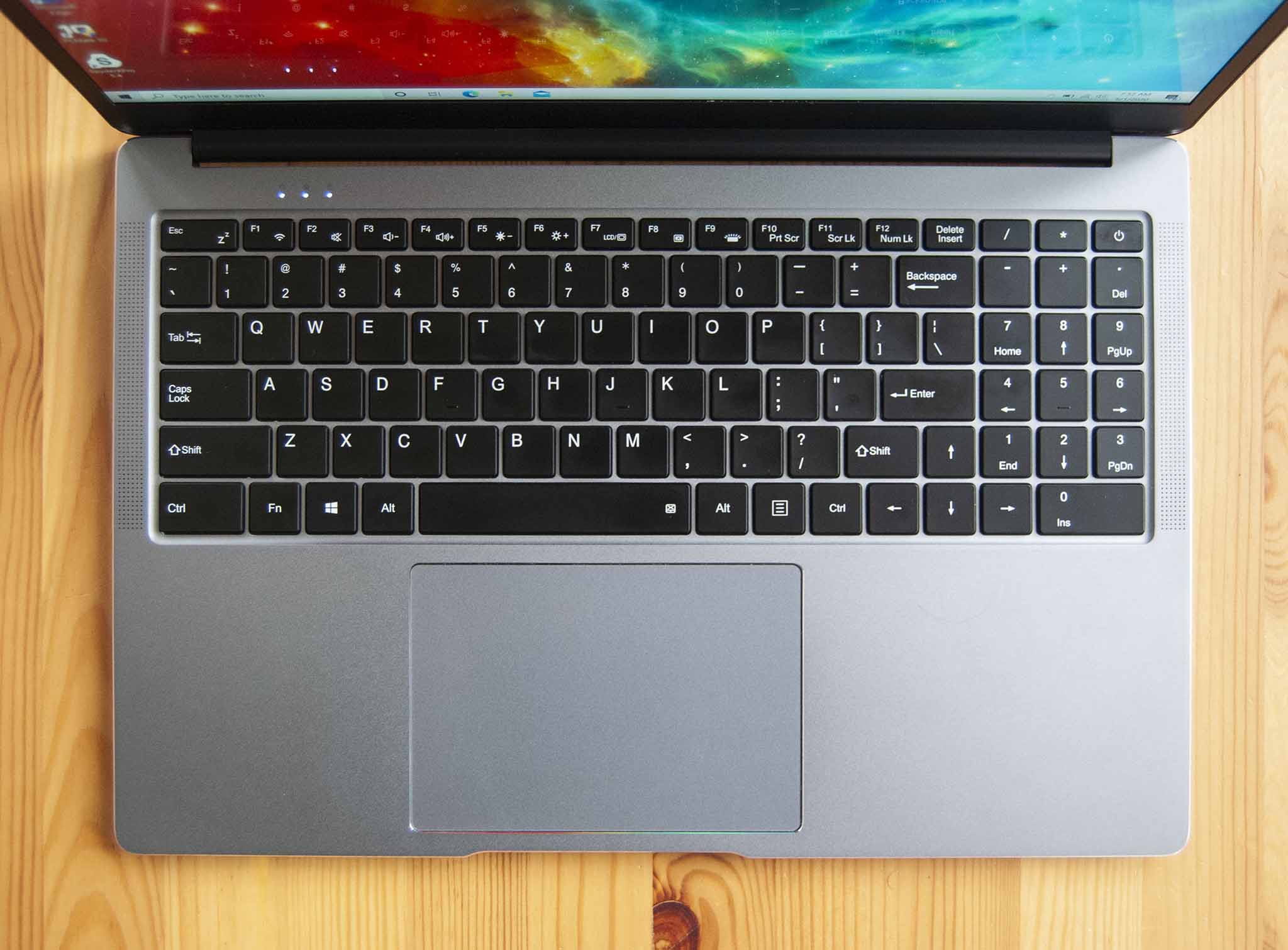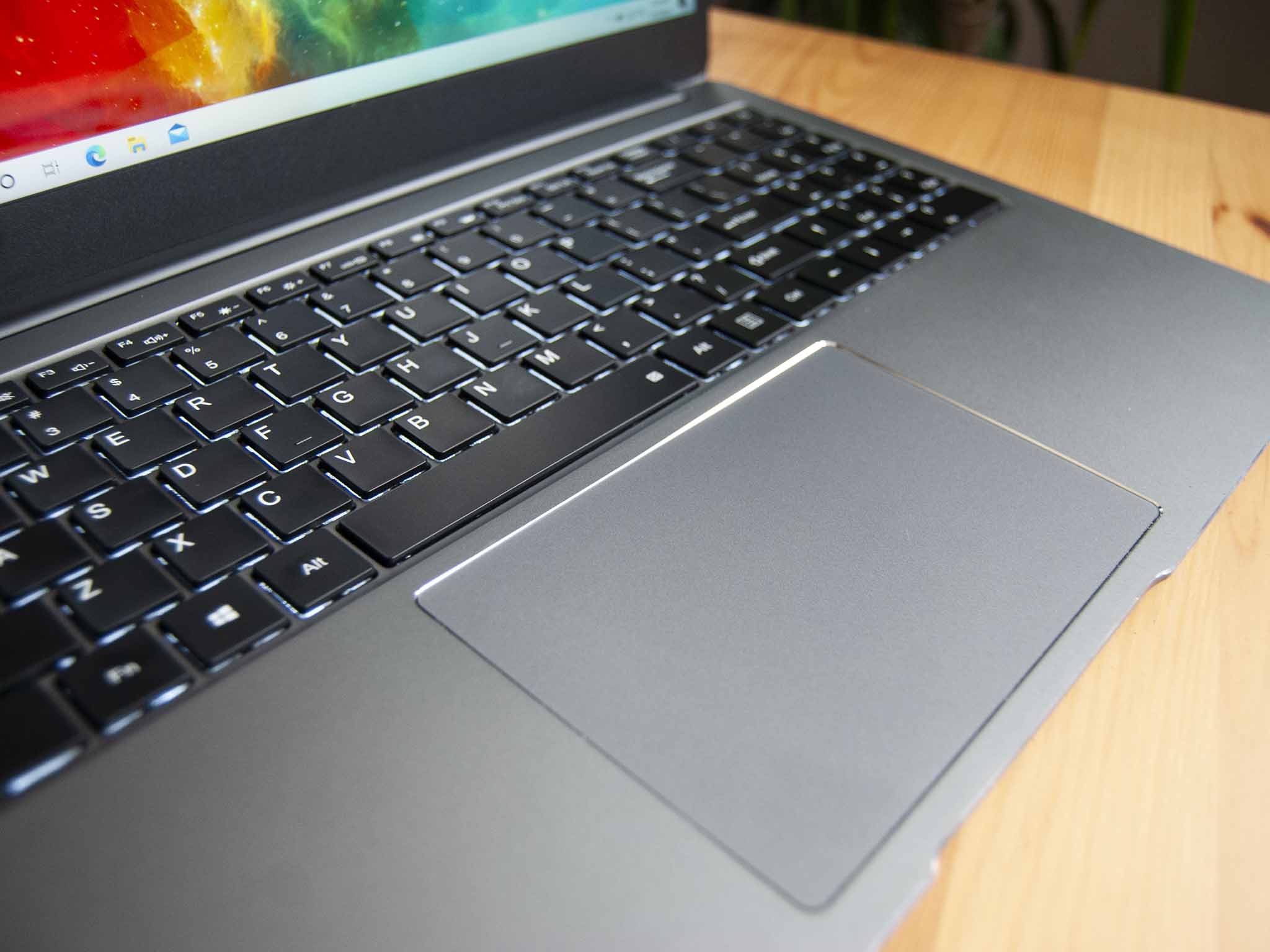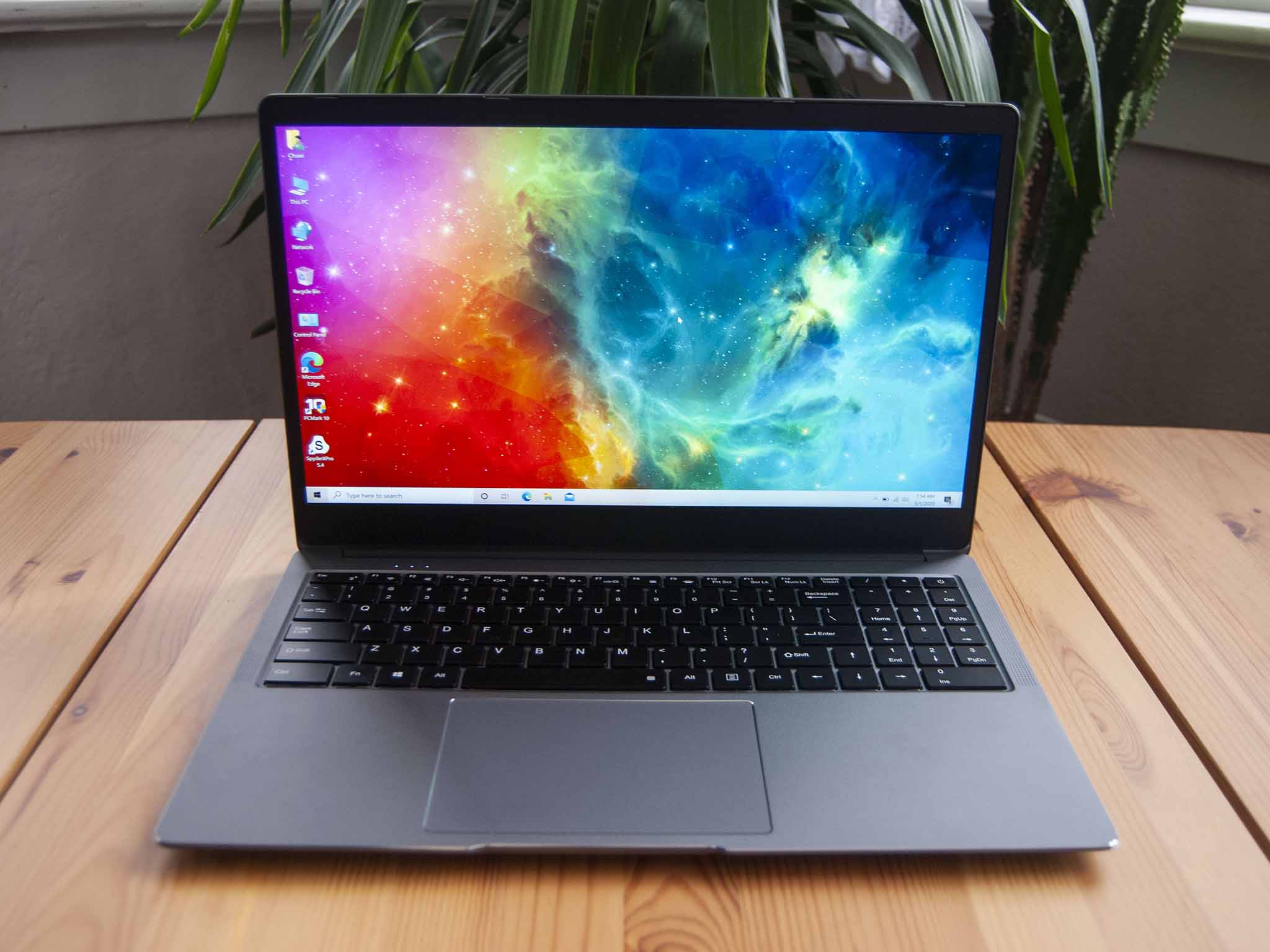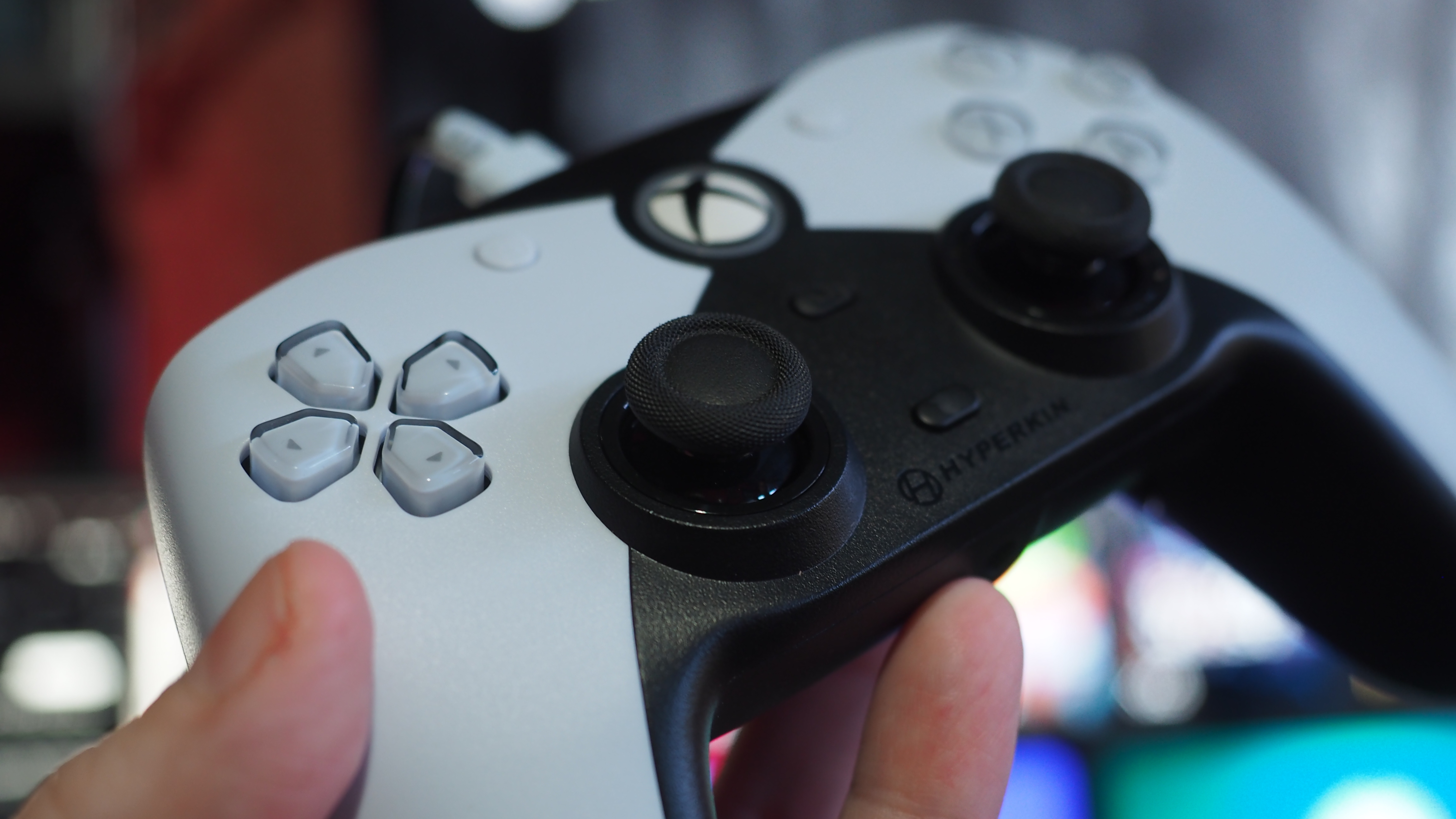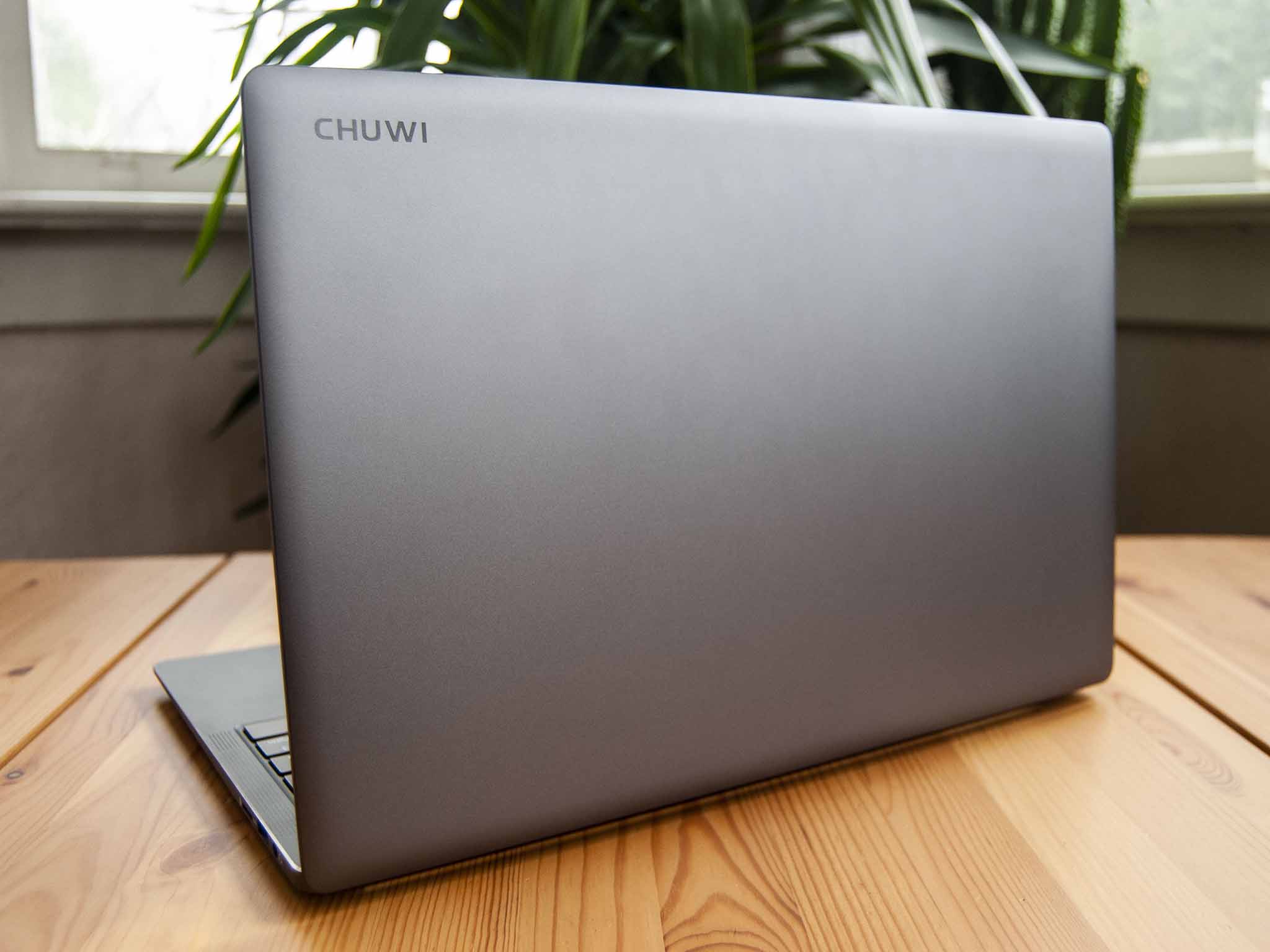
CHUWI is back with another crowdfunded laptop on Indiegogo, this time a 15.6-inch AeroBook Pro with 4K display and all-metal chassis. A lot like the LapBook Plus that we previously reviewed, the AeroBook Pro trades modern performance, and some features for a rather brilliant display and sleek design. I've been using the laptop for the last week for general productivity work and some movie watching to see where it excels and, ultimately, whether or not it's worth a buy.
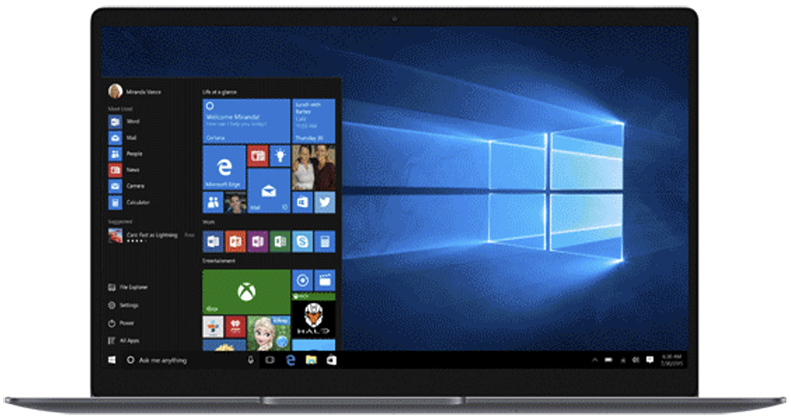
Bottom line: CHUWI's AeroBook Pro 15.6 delivers a 4K display and sleek all-metal design, all for a bargain price. 6th Gen Intel Core hardware offers OK performance for productivity, but the keyboard and touchpad make it a pain to use. It's a laptop best for media and not much else.
Pros
- Beautiful 4K display for the price
- Sleek all-metal design
- Decent port selection
- Upgradeable SSD
- Top-firing speakers
Cons
- Dismal keyboard and touchpad
- Using 6th Gen Intel Core hardware
- Relatively slow SATA storage
CHUWI AeroBook Pro 15.6 at a glance
CHUWI provided Windows Central with a review unit of the 15.6-inch AeroBook Pro. It's the baseline offering, with 6th Gen Intel Core i5-6287U processor (CPU), 8GB of LPDDR4-2133MHz RAM, 256GB M.2 solid-state drive (SSD), and 4K display. This model is priced at about $509 at Indiegogo, with a number of upgrades and config options available.
Doubling RAM up to 16GB costs about $90, bringing the total up to $600. RAM is soldered, so you might want to get as much as possible from the get-go. There are two SSD slots inside the laptop, so an upgrade after purchase is possible.
If you'd like to upgrade to a more powerful CPU, an AeroBook Pro with 6th Gen Intel Core i7-6567U, 16GB of RAM, and 512GB SSD costs about $850. Here are the exact specs found in the review unit I received for testing.
| Category | Spec |
|---|---|
| OS | Windows 10 Home |
| Processor | 6th Gen Intel Core i5-6287U Dual-core Up to 3.5GHz |
| RAM | 8GB LPDDR4-2133MHz |
| Graphics | Intel Iris Graphics 550 |
| Storage | 256GB M.2 SSD |
| Display | 15.6 inches 3840x2160 (UHD) IPS, glossy |
| Ports | Two USB-A 3.0 USB-C HDMI microSD card reader 3.5mm audio jack |
| Audio | Top-firing Dual speakers |
| Wireless | 802.11ac Bluetooth 4.2 |
| Camera | Front-facing 2MP |
| Battery | 55.9Wh |
| Dimensions | 14.25 x 9.53 x 0.63 inches (362mm x 242.1mm x 15.9mm) |
| Weight | 3.75 pounds (1.7kg) |
What I love about the CHUWI AeroBook Pro 15.6
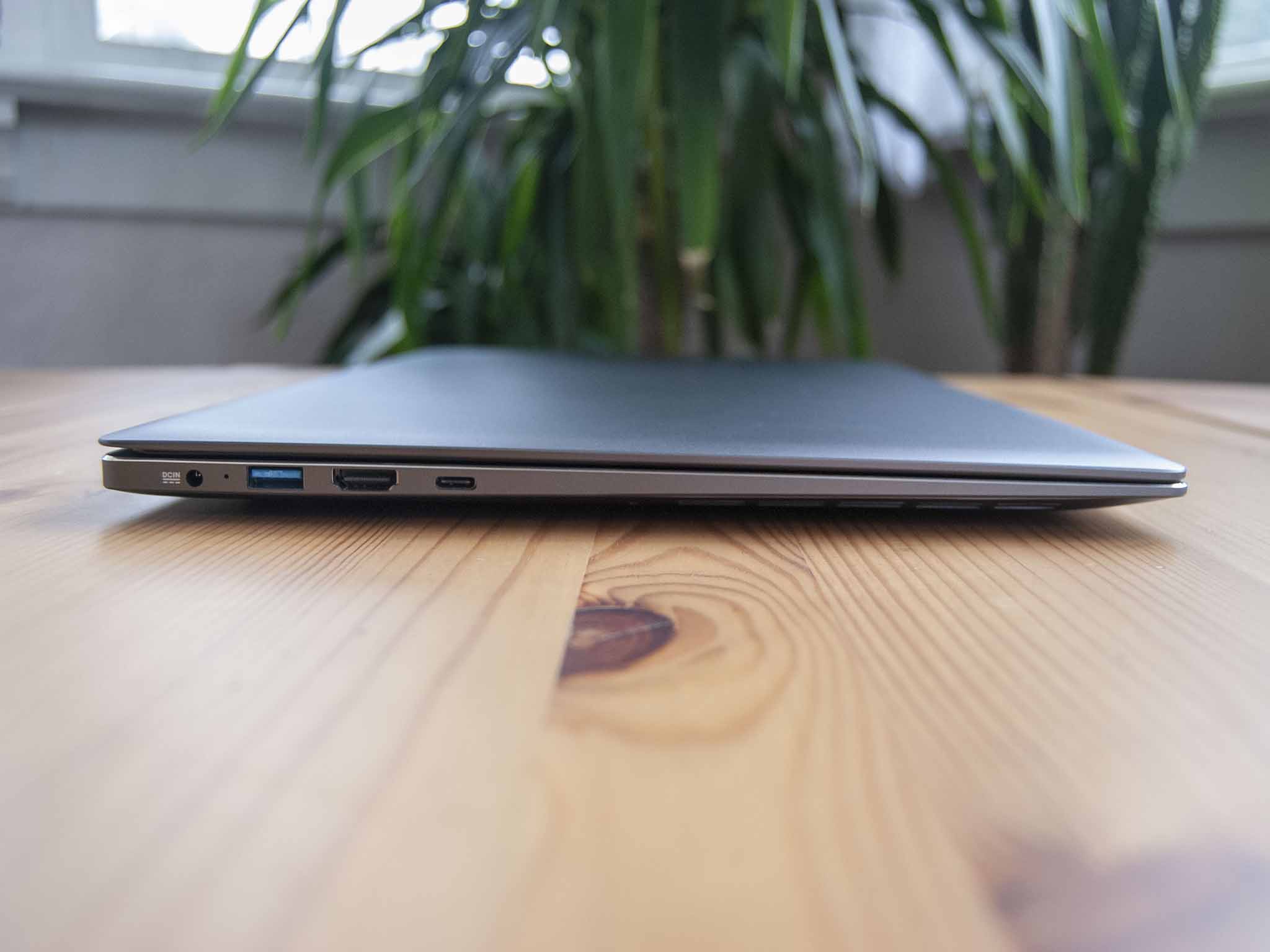
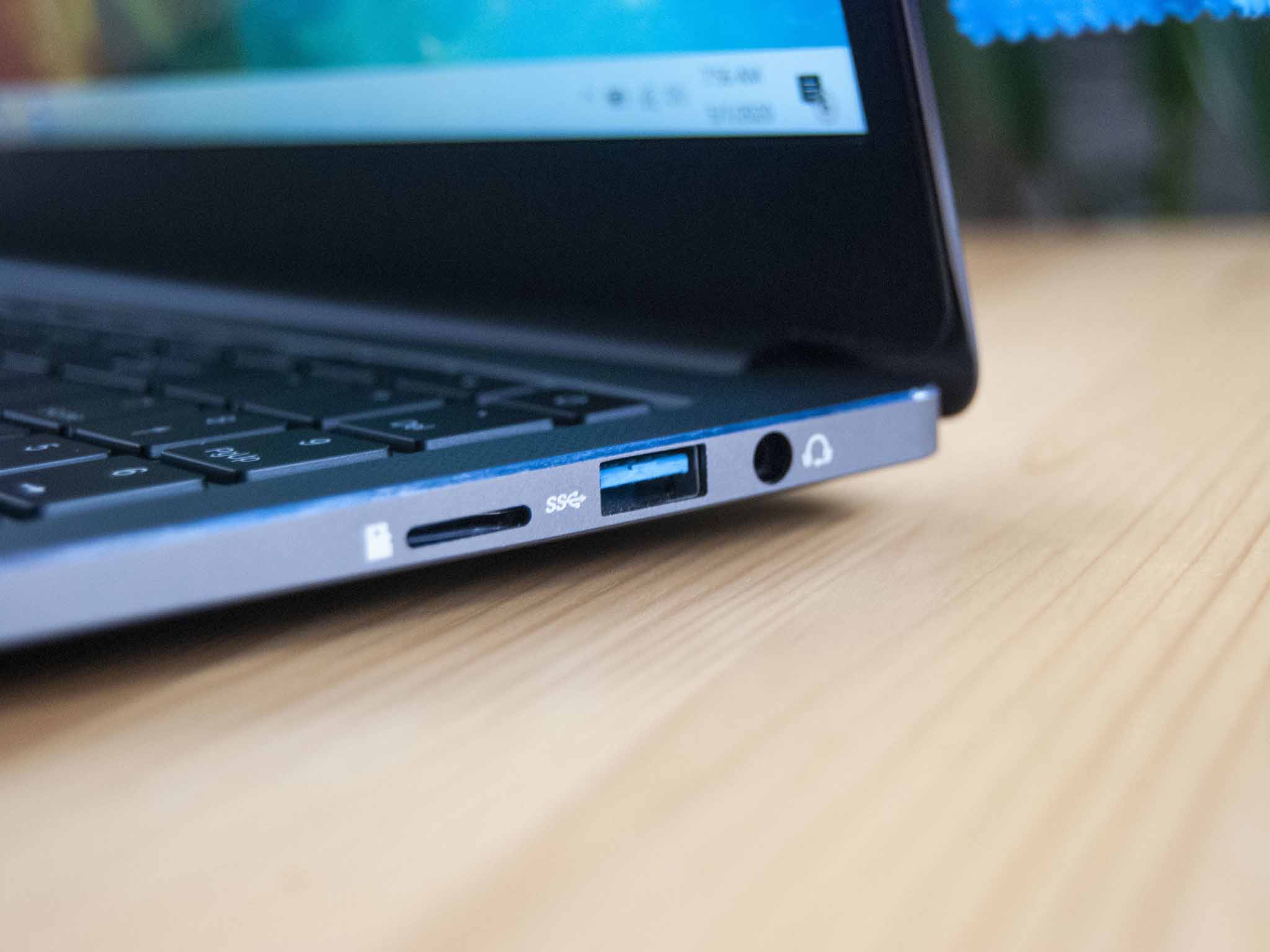
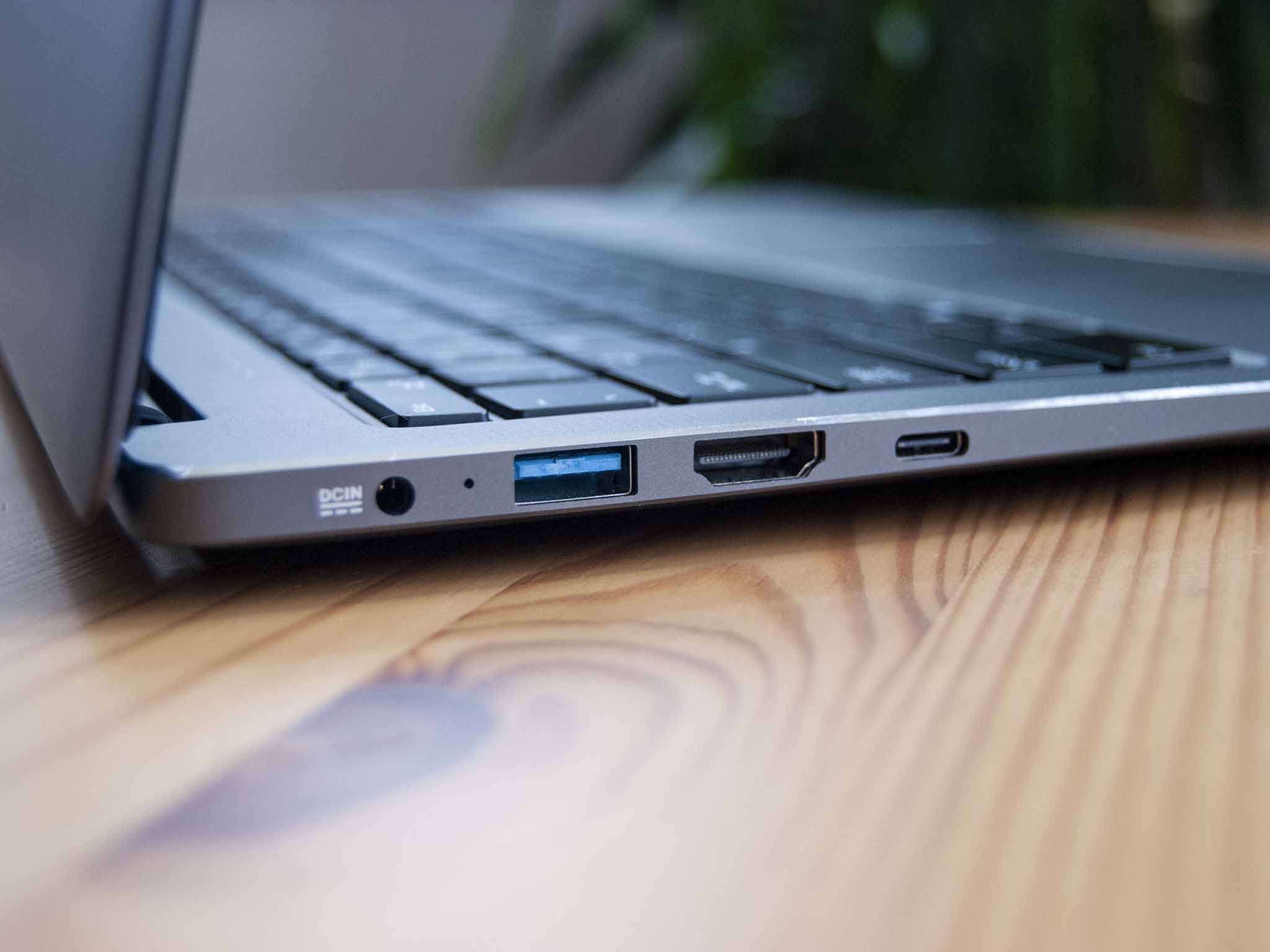
Like most of CHUWI's latest creations, the AeroBook Pro has a rather fancy all-metal chassis with shiny beveled edges. It looks like a premium device from the outside, and inside you're treated to a full keyboard with number pad and monstrous Precision touchpad. It certainly apes the MacBook look. Weighing in at 3.75 pounds (1.7kg) for a 15.6-inch 4K device isn't bad, and it's just 0.63 inches (15.9mm) thin. If you'd like to take it with you when you leave your home or office, it shouldn't pose much of a problem.
CHUWI's svelte AeroBook Pro is an affordable way to land a 15.6-inch 4K display.
The thin lower portion of the chassis houses a generous number of ports, including two USB-A 3.0, USB-C, HDMI, 3.5mm audio, and a microSD card reader. There's also a barrel-style charging port on the left side. The power button is placed in the top-right corner of the keyboard, so not much risk of hitting it when picking up and walking around with the device.
The full keyboard with number pad stretches almost edge to edge, with a bit of space on either side for top-firing speakers. Despite appearing to run the entire depth of the keyboard, the speakers and punched grill only make up a small portion; the rest of the "grill" is just painted on. It's not a big deal, and the audio is pretty good. The sound gets loud and doesn't distort, but I wish it had more bass. It's good enough that I didn't mind leaving headphones aside when watching a movie.
All the latest news, reviews, and guides for Windows and Xbox diehards.
The best feature of the AeroBook Pro — especially at the price point — is the 15.6-inch 4K display. It has a glossy finish, but it does hit a maximum of 349 nits to help counteract glare. At its lowest, it only gets down to 88 nits, which can be a bit of an issue if you often use your laptop in the dark. Even with the Windows 10 Night Light enabled, it is a bit hard on the eyes.
Testing color with the DataColor SpyderX Pro, I got back 94% sRGB, 73% AdobeRGB, and 76% DCI-P3. Those are respectable numbers, but a bit lower than the 100% sRGB CHUWI claims. Using the display for media and productivity is no problem. The raised plastic bezel isn't too thick to be unsightly, though it is noticeably larger than on other premium 15-inch laptops.
The AeroBook Pro is packing a 6th Gen Intel Core i5-6287U, which is more than a few years old. CHUWI advertises it as the same CPU used in the MacBook Pro, which is technically true — it was the late-2016 MacBook Pro that used it. Despite its age, this dual-core CPU puts up performance close to a modern 10th Gen Core i3 CPU and much more performance than the Atom chips we've seen in other CHUWI laptops. If it weren't for the terrible keyboard and touchpad, this would be a great laptop for office work.
The 55.9Wh battery is a significant upgrade compared to the 36.5Wh battery in CHUWI's other 4K LapBook Plus laptop, but life is about the same due to the beefier CPU. I tested with PCMark 10's Modern Office battery rundown test and saw three hours and 28 minutes with 60% display brightness and power set to maximum performance. Lowering brightness to 40% and changing to a better battery power plan will extend that time to somewhere around five hours of regular use. It could be better, but for a 4K laptop, this price it's a decent life. You can expect about 50% battery life in an hour when charging from dead, though the second half takes quite a bit more time.
I ran some synthetic benchmarks to see how well the AeroBook Pro compares to other laptops we've reviewed.
CPU
Geekbench 5.0 Benchmarks (Higher is better)
| Device | CPU | Single core | Multi core |
|---|---|---|---|
| CHUWI AeroBook Pro | i5-6287U | 925 | 2,049 |
| Lenovo Yoga C640 | i3-10110U | 1,015 | 2,111 |
| Lenovo Yoga C740 15 | i7-10510U | 1,229 | 3,531 |
| Lenovo Yoga C740 14 | i5-10210U | 1,094 | 3,767 |
| Dell XPS 13 (9300) | i7-1065G7 | 1,284 | 4,848 |
| LG gram 17 (2020) | i7-1065G7 | 1,208 | 3,349 |
| Acer Swift 5 (SF514-54T) | i7-1065G7 | 1,202 | 3,600 |
| Surface Pro 7 | i7-1065G7 | 1,205 | 4,852 |
| Surface Laptop 3 13.5 | i5-1035G7 | 1,177 | 4,413 |
| Dell XPS 13 2-in-1 7390 | i7-1065G7 | 1,209 | 3,571 |
| Dell XPS 15 7590 | i9-9980HK | 1,176 | 7,624 |
Performance from the dual-core 6th Gen Intel Core i5-6287U CPU is just less than you'd get from a 10th Gen Intel Core i3-10110U, as seen in the benchmark result above. It's enough to handle standard productivity work, but don't expect it to perform miracles with anything specialized or intensive.
PCMark
PCMark 10 Express
| Device | Score |
|---|---|
| CHUWI AeroBook Pro | 3,780 |
| Lenovo Yoga C640 | 4,008 |
| Lenovo Yoga C740 15 | 5,302 |
| Lenovo Yoga C740 14 | 4,941 |
| Dell XPS 13 (9300) | 4,524 |
| LG gram 17 | 4,157 |
| Acer Swift 5 (SF514-54T) | 4,415 |
| Surface Pro 7 (i5) | 3,992 |
| Surface Laptop 3 15 (AMD) | 4,006 |
| Dell XPS 13 2-in-1 (7390) | 4,427 |
| Dell Inspiron 13 7390 2-in-1 | 3,764 |
| Dell XPS 15 7590 | 5,521 |
| Dell Precision 3541 | 3,906 |
Again we can see how a system with 6th Gen Intel Core i5 CPU is slightly less powerful than something with a 10th Gen Intel Core i3 CPU. Still, everyday tasks feel snappy and responsive.
Cinebench
Cinebench (R20) (Higher is better)
| Device | CPU | Range |
|---|---|---|
| CHUWI AeroBook Pro | Core i5-6287U | 845 to 862 |
| Lenovo Yoga C640 | Core i3-10110U | 924 to 929 |
| Lenovo Yoga C740 15 | Core i7-10510U | 1,415 to 1,613 |
| Lenovo Yoga C740 14 | Core i5-10210U | 1,450 to 1,535 |
| LG gram 17 | i7-1065G7 | 1,079 to 1,199 |
| Acer Swift 5 (SF514-54T) | Core i7-1065G7 | 1,361 to 1,400 |
| Lenovo ThinkPad P53 | Xeon E-2276M | 2,686 to 2,701 |
| Surface Laptop 3 13.5 | Core i5-1035G4 | 1,584 to 1,606 |
| Surface Laptop 3 15 | Core i7-1065G7 | 1,703 to 1,745 |
Running the Cinebench R20 render test multiple times in a row can show how well a laptop deals with heat and thermal throttling. The laptop keeps cool under load, no doubt, thanks to the metal chassis dispersing a lot of heat. The fan does get loud at times, but for the most part, it runs quietly.
SSD
CrystalDiskMark (Higher is better)
| Device | Read | Write |
|---|---|---|
| CHUWI AeroBook Pro | 556.38 MB/s | 416.27 MB/s |
| Lenovo Yoga C640 | 1,906.78 MB/s | 970.69 MB/s |
| Lenovo Yoga C740 15 | 1,442.30 MB/s | 357.40 MB/s |
| Lenovo Yoga C740 14 | 3,408 MB/s | 2,982 MB/s |
| LG gram 17 (2020) | 3,477 MB/s | 2,900 MB/s |
| Surface Laptop 3 15 | 2,028 MB/s | 806 MB/s |
| Surface Laptop 3 13.5 | 2,338 MB/s | 1,583 MB/s |
| Acer Swift 5 (SF514-54T) | 1,641 MB/s | 1,025 MB/s |
| Lenovo ThinkPad X1 Extreme (Gen 2) | 3,416 MB/s | 3,016 MB/s |
| Lenovo ThinkPad P53 | 3,567.23 MB/s | 2,813.25 MB/s |
| Lenovo ThinkPad P52 | 3,120 MB/s | 1,551.5 MB/s |
| Dell XPS 15 7590 | 3,000 MB/s | 2,796 MB/s |
| MSI PS63 Modern | 3,300 MB/s | 1,875 MB/s |
The HikVision SATA SSD used here is comparatively slow but performs as it should. I ran a PCMark 10 System Drive benchmark as well and got a score of 722.
What I dislike about the CHUWI AeroBook Pro 15.6
A lot of minor issues can be ignored, especially when a laptop is priced at around $500. SATA storage really isn't a big deal, older Intel hardware still performs well for office work, and the average webcam is passable. These issues don't interfere with the overall package.
Note: CHUWI has reached out to explain the issue with keyboard and touchpad. The problem involves keycap and silicone gasket, which it is attempting to rectify in future updates to the laptop. As for the touchpad, the tracking problem aims to be solved with a driver update.
The biggest issue with the AeroBook Pro — and one that is noticeable as soon as you start using the laptop — is the keyboard and touchpad. At first glance, it looks like the combination is going to be a winner. Keys are large and spaced well, it has a bright backlight, and the enormous touchpad uses Precision drivers. But typing and pointing is a pain.
While typing, the spacebar won't work unless you hit it directly in the middle or very hard along the outer edges. This immediately makes the typing experience miserable, and it's not helped by some other keys feeling a bit sticky. Anytime you want a space, you must consciously tap your thumb instead of plowing along at your normal speed. I lasted about an hour before giving up and returning to my regular keyboard.
The touchpad, with Precision drivers, is huge, and I was excited to test it out. Unfortunately, it tracks poorly and has inconsistent clicks. Pointing and clicking will often result in the cursor teleporting to the bottom corner of the screen or not clicking at all. Even after adjusting cursor speed and sensitivity, the issues remained.
It's a shame about the keyboard and touchpad because this laptop would otherwise be an easy recommendation for anyone looking for a budget 4K laptop for general use. As it stands, it's really not good for anything other than watching TV or movies on the high-res display.
Should you buy CHUWI's AeroBook Pro?
CHUWI's AeroBook Pro is a great budget laptop turned into a poor budget laptop because of the keyboard and touchpad. Using the device for anything but setting up something to watch or browsing the web often results in frustration because of the sticky keys and inaccurate pointing. Those issues are solved with an external mouse and external keyboard, but they shouldn't be necessary.
Considering the price, the 4K display, port selection, and overall all-metal design are stellar. A 6th Gen Intel Core i5 CPU puts up performance close to a 10th Gen Intel Core i3 chip, which is enough to handle office productivity. Altogether, though, I'd only recommend this laptop to anyone who needs a secondary device strictly for media. Trying to type or otherwise be productive all day with the built-in inputs is just not worth your time.

Cale Hunt brings to Windows Central more than nine years of experience writing about laptops, PCs, accessories, games, and beyond. If it runs Windows or in some way complements the hardware, there’s a good chance he knows about it, has written about it, or is already busy testing it.
